It’s time to move past the question of if AI is being used and start exploring how it’s being used.


In today’s classrooms, artificial intelligence is an everyday learning tool—helping students generate ideas, organize thoughts, translate languages, and visualize complex concepts. But as these tools become more integrated into the educational experience, educators need to help promote transparency, reflection, and ownership in the use of AI in learning.



AI Literacy Tags were created to promote transparency, reflection, and ownership in the use of AI in learning. These tags allow students and educators to clearly communicate the role AI played in their work—whether it supported the writing process, provided research insights, or generated images for a presentation.
Rather than hiding or minimizing AI use, these tags empower learners to recognize their agency, document their choices, and build the critical thinking skills they need to use technology responsibly.

This system isn’t about compliance—it’s about clarity.
It’s about giving credit where it’s due, while also giving learners the language to describe their process. And most importantly, it’s about creating space for dialogue, equity, and innovation as we continue to navigate the evolving landscape of AI in education.
How does AI support your learning?
AI as a Learning Partner
These tags represent ways AI tools offer feedback, spark ideas, and/or support the learning process.
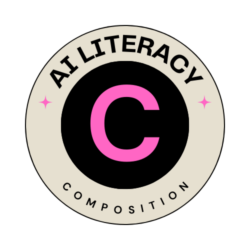
AI for Composition
Used to support drafting, revising, summarizing, or improving grammar and clarity
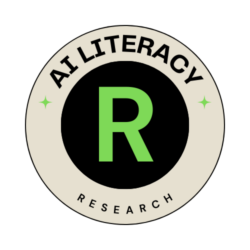
AI for Research
Used to gather background information, analyze sources, or synthesize findings

AI for Ideation & Brainstorming
Used to generate ideas, explore creative directions, or map out concepts

AI for Feedback Loops
Used to evaluate and improve work through suggestions, scoring, or self-assessment tools
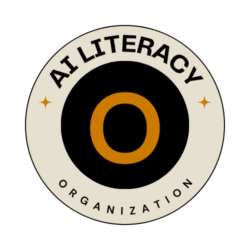
AI for Organization
Used to support organizational thinking by structuring ideas, creating outlines, and sequencing steps for clarity and flow
AI as a Creative Assistant
These tags represent ways AI tools generate, personalize, and/or adapt content.
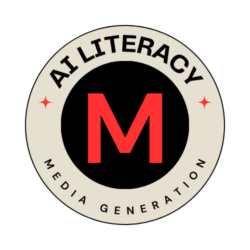
AI for Media Generation
Used to create visuals, graphics, or other media elements to enhance presentations or understanding
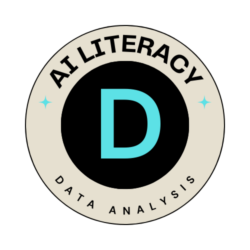
AI for Data Analysis
Used to create charts, identify patterns, or summarize data sets
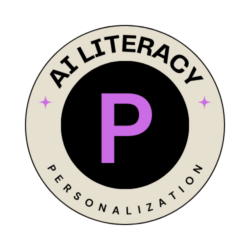
AI for Personalization
Used to adapt learning materials to individual needs (e.g., reading level, learning style)

AI for Translation
Used to translate content, improve fluency, or scaffold multilingual learning
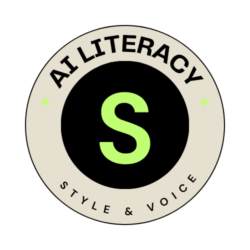
AI for Style & Voice
Used to enhance creative expression by refining tone, adjusting style, and aligning written or visual work with a consistent and authentic voice.
No Intentional AI Use
This tag recognizes original thinking, independent effort, and intentional decision-making to complete a task without AI assistance.
While complete absence of AI influence is increasingly rare, this tag honors mindful autonomy and authentic creative ownership in the work produced.
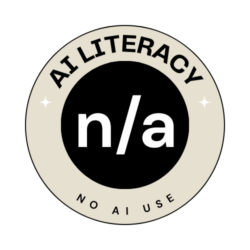
Try your hand at AI Lit Blitz!
Play smart. Think fast. Blitz your way through AI literacy!

AI Lit Blitz is a fast-paced, interactive game that helps players build foundational AI literacy through fun, fill-in-the-blank challenges.
Aligned to 8 core categories of classroom AI use — from research assistance to media generation — players select a topic, answer prompts, and race to complete all categories.
It’s perfect for classrooms, workshops, or team PD sessions.


© 2025 Cate Tolnai – AI Literacy Tags and all associated products licensed under CC BY-NC-SA 4.0 International
Are these tags helping you reflect and communicate your AI use?
I’d love to hear how they’re working for you.
Whether you’re using them with students, applying them to your own work, or adapting them for your classroom—your feedback matters. Let me know what’s useful, what’s missing, or what could be clearer.
This is a living system, and your voice helps shape it.
